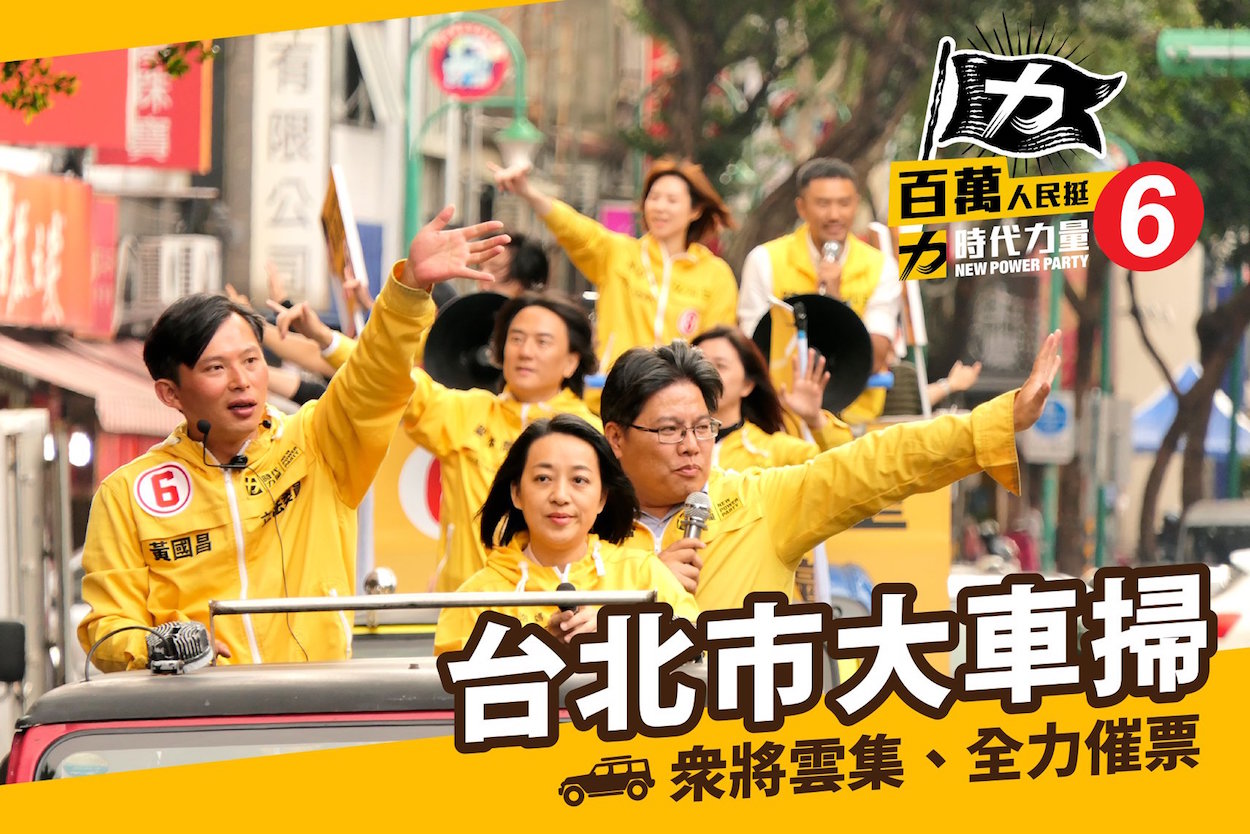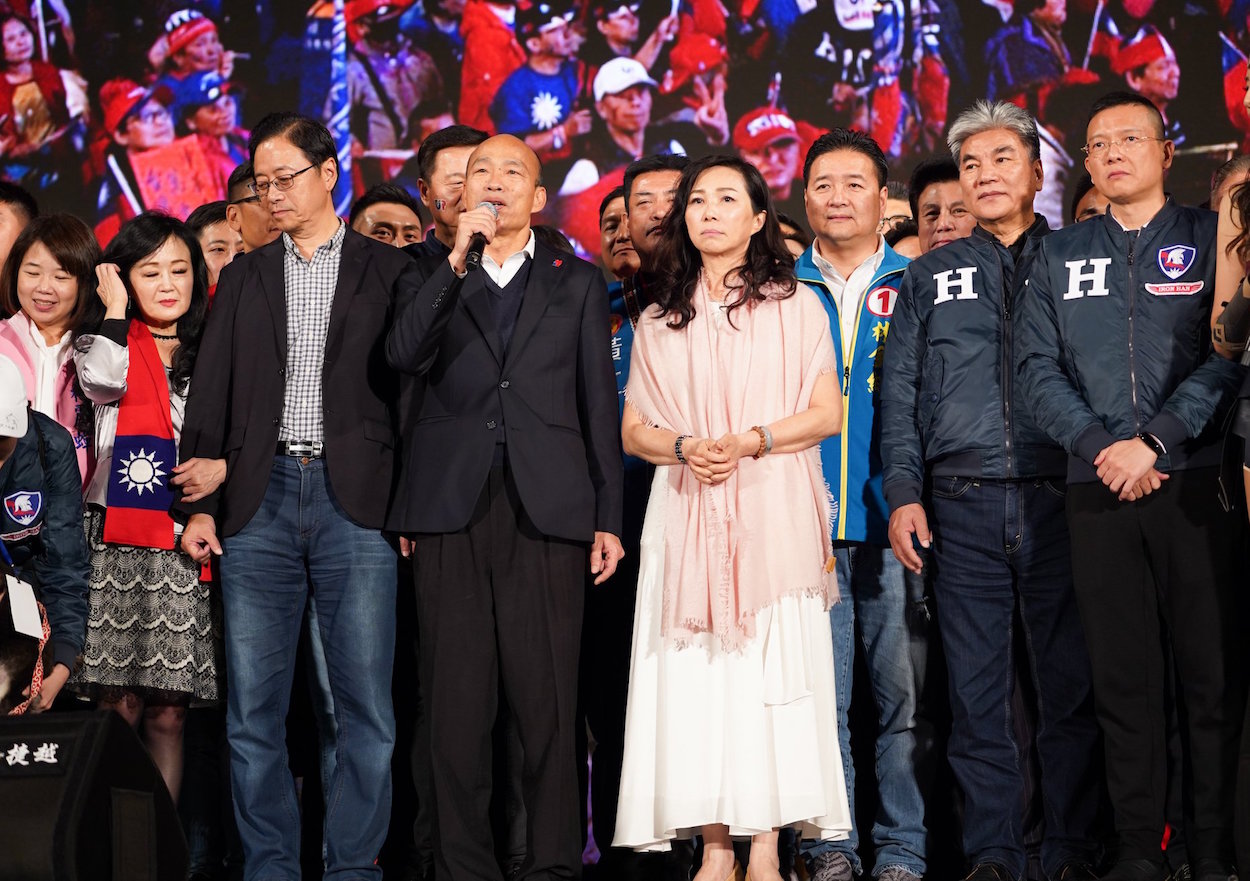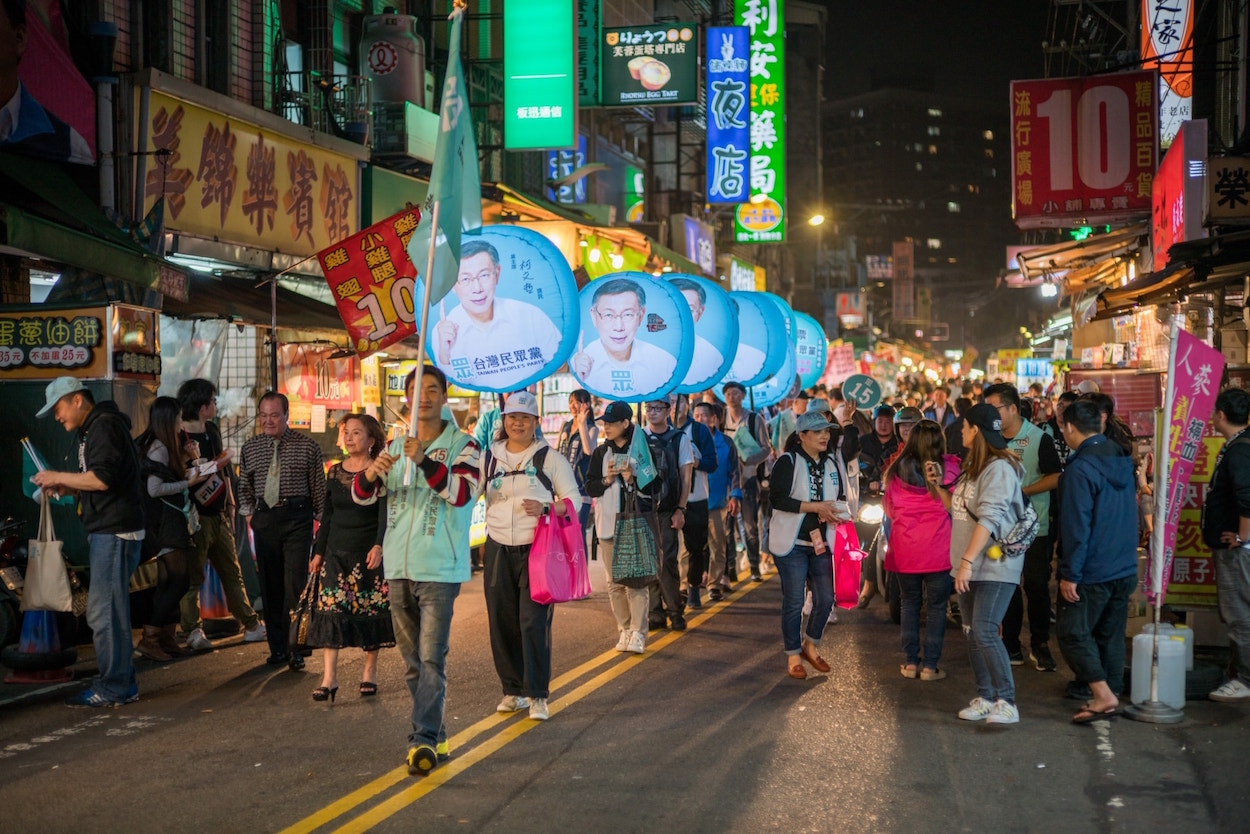by Brian Hioe
語言:
English
Photo Credit: 民進黨青年部/Facebook
IN TRACKING POLITICAL developments in the five years since the Sunflower Movement, one has observed a number of unexpected developments in the past year. First, one has seen increasingly large internal splits among the Third Force, and the sudden and unexpected resurgence of the KMT, which led to the consolidation of the pan-Green camp within the DPP.
 Huang Kuo-chang (left) and other NPP members. Photo credit: 時代力量 New Power Party/Facebook
Huang Kuo-chang (left) and other NPP members. Photo credit: 時代力量 New Power Party/Facebook
The Third Force originated as the attempt to create a “third political force” in Taiwanese society, which was neither DPP or KMT. Third Force parties were clearly pan-Green political parties, oftentimes proving more emphatic on the issue of Taiwanese independence than the DPP. At the same time, Third Force parties sought to steer a separate independent political course from the DPP because of the view that the DPP had grown corrupt after its years in office.
It is clear that Taiwanese voters were, indeed, looking for an alternative to both the DPP and KMT. Although the NPP proved the only Third Force party that was able to secure any seats in the Taiwanese legislature, the NPP rapidly grew to become Taiwan’s third-largest party, with five legislators and 16 city councilors by 2018.
In the immediate aftermath of the Sunflower Movement, the KMT suffered an internal crisis, leading the party to be in disarray until 2018. For some time, it appeared as though pan-Blue political forces would gradually become marginalized and then eliminated from Taiwanese politics this, with survey data indicating strengthening Taiwanese identity trends.
What was unexpected, however, is that the KMT would prove resurgent in 2018 elections, with voters seemingly deciding to punish the DPP for sluggish economic growth, and the KMT seemed to have found a charismatic new political candidate in the form of Kaohsiung mayor Han Kuo-yu. Although some at the time perceived trends in Taiwanese identity as having reversed, one notes that the NPP actually performed quite well in the same year that the KMT seemed to have made an unexpected political comeback. It is probable that Taiwanese voters were generally voting out of a desire to see a political alternative to an increasingly inflexible DPP, even if this meant voting for the KMT again.
 Han Kuo-yu of the KMT. Photo credit: 韓國瑜/Facebook
Han Kuo-yu of the KMT. Photo credit: 韓國瑜/Facebook
Yet despite the NPP’s strong performance, the resurgence of the KMT provoked a political crisis within the NPP and other Third Force parties. Internal splits began to open up within the NPP regarding whether to tacitly endorse the Tsai administration or not, leading to the fragmentation of the party after the departure of Freddy Lim, one of the party’s two heavyweights.
This year, the DPP itself signaled openness to working with smaller third parties, as it did in 2016, and the DPP began to absorb some younger members of Third Force parties either as party workers or candidates. This would seem to be something of a United Front approach, though it is to be seen whether this will be successful.
It is probable that fractures will open up in this United Front down the line. Namely, despite the fact that the KMT seemed like it had staged a successful return to form last year, the KMT suddenly experienced a downturn in past months. Voters may have been hoping to punish the DPP by voting KMT or hoping to seek an alternative to the DPP, but they very likely were not hoping the KMT’s pro-China political agenda. The KMT’s mistake seems to have been to take its election victory as a sign of a mandate to again begin advancing a pro-unification political agenda, as observed in backlash against the KMT’s party list.
It is generally expected that, as a result of the KMT’s sudden reversal in political fortunes again, the pan-Green camp will be able to retain at least the presidency, if it is a greater question as to whether the DPP will retain the majority in the legislature. But if the KMT seems like less of a threat following the election, one expects the United Front which formed to oppose the KMT to collapse, and younger post-Sunflower pan-Green forces to again begin fragmenting.
 Members of Ko Wen-je’s TPP. Photo credit: 柯粉俱樂部/Facebook
Members of Ko Wen-je’s TPP. Photo credit: 柯粉俱樂部/Facebook
At the same time, one does not expect a complete reversal of last year’s trends in the pan-Blue camp. The populist wave set loose by Han Kuo-yu may continue, for example, even if it may find a new political candidate to hitch its fortunes to. Similarly, there is the possibility of alignment between Ko Wen-je’s TPP and elements of the KMT. Namely, Ko is seeking to capitalize on voters’ desires for political alternatives to the DPP and KMT by claiming that his TPP is a party “beyond Blue and Green” political distinctions. While the longevity of the party is limited by its being centered around his cult of personality following, the TPP could extend its shelf life beyond being focused around the political career of a single politician through alignment with the KMT, while the KMT could absorb some younger voters.
What the political landscape will look like in the wake of 2020 elections remains unclear, then, even if many expect a pan-Green presidential victory. The possibilities for party politics further left than the two-party hegemony of the DPP and KMT may yet remain foreclosed.

